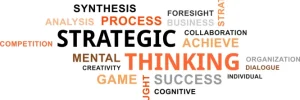Take control of your employment future with proper seeker registration
Signing up as a job seeker is not just a formality—it is a key step in improving employment prospects. Whether unemployed or looking for better opportunities, proper seeker registration grants access to job offers, training programs, and financial aid.
Understanding the process can save time and frustration. This guide explains what being a job seeker means, how to register efficiently, and how to maximize the benefits available.
What does it mean to be a job seeker?
Being a job seeker is more than being unemployed. It is an official status obtained by registering with the Servicio Público de Empleo Estatal (SEPE) or the corresponding regional employment service, such as the SOC in Catalonia or the SAE in Andalusia. This registration enhances visibility to employers and provides access to crucial employment resources.
Why should you register?
-
Access to unemployment benefits – If eligible, registration is mandatory to receive support.
-
Free training programs – Gain new skills through certified courses.
-
Personalized job offers – The employment service will consider your profile for vacancies.
-
Financial aid and grants – Depending on the circumstances, it is possible to qualify for additional support.
This service is not limited to the unemployed. Those seeking career advancement can also benefit from registration.
Basic requirements to sign up
Before starting the process, it is necessary to meet the following criteria:
- Be at least 16 years old and available for work.
- Have Spanish nationality, be an EU citizen, or hold a valid work permit if a foreigner.
- Provide the necessary documentation, including DNI, passport, Social Security card, and relevant academic certificates.
How to register as a job seeker
prepare the documentation
The required documents include:
- Identity document (DNI, NIE, or passport).
- Social Security affiliation card.
- Previous contracts or training certificates, if available.
- Proof of residence, if required.
Online or in-person registration
- Online – Registration can be completed through the SEPE website or the regional employment service platform. Some services provide step-by-step guidance.
- In person – It is also possible to visit an employment office and request an appointment. All required documents must be presented.
Initial interview
As part of the registration process, a brief interview may be conducted to assess job profile, experience, and preferences. This helps match candidates with suitable opportunities.
Benefits of being registered
-
Access to employment programs such as the Reincorpora-T Plan for individuals over 45.
-
Free and certified training in high-demand sectors.
-
Support for entrepreneurs, including financial aid and business advice.
-
Increased visibility to employers seeking candidates through public employment services.
Common mistakes when registering as a job seeker
-
Not updating the employment profile – Any changes in training or experience should be reported.
-
Ignoring training opportunities – These programs provide direct access to employment.
-
Lack of awareness of available aid – It is important to research all financial support options.
What happens after registration?
Once registered, it is possible to:
-
Search for job offers matching professional skills.
-
Sign up for courses and workshops to improve qualifications.
- Apply for unemployment benefits or subsidies, if eligible.
Remaining active within the system is essential, as employment services periodically review individual situations.
Conclusion: more than a formality, a key step towards the future
Registering as a job seeker is not merely an administrative step but a strategic tool for professional growth. From financial aid to specialized training, it offers numerous opportunities for career advancement.
Taking this step marks the beginning of a new professional path. Seizing the available resources can make a significant difference in achieving employment goals.
You may be interested to read about…






